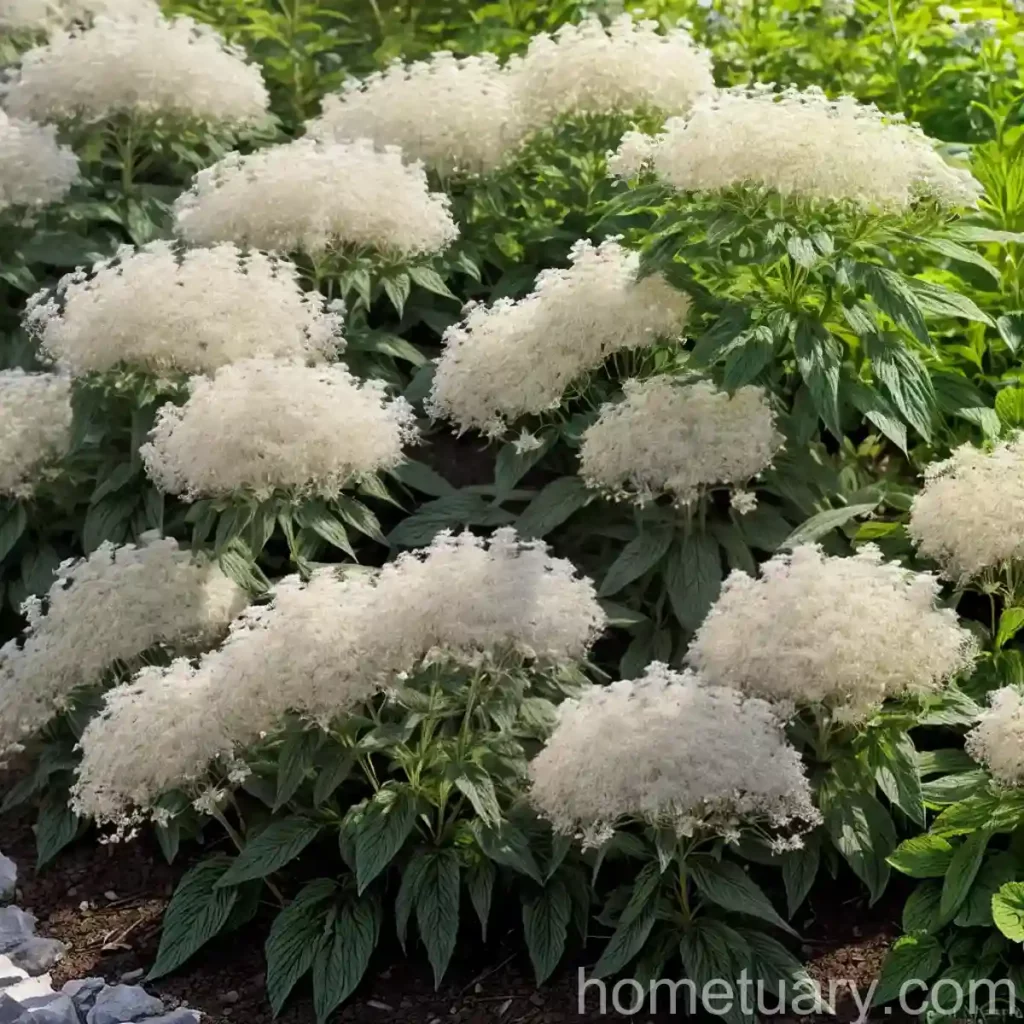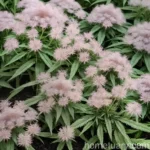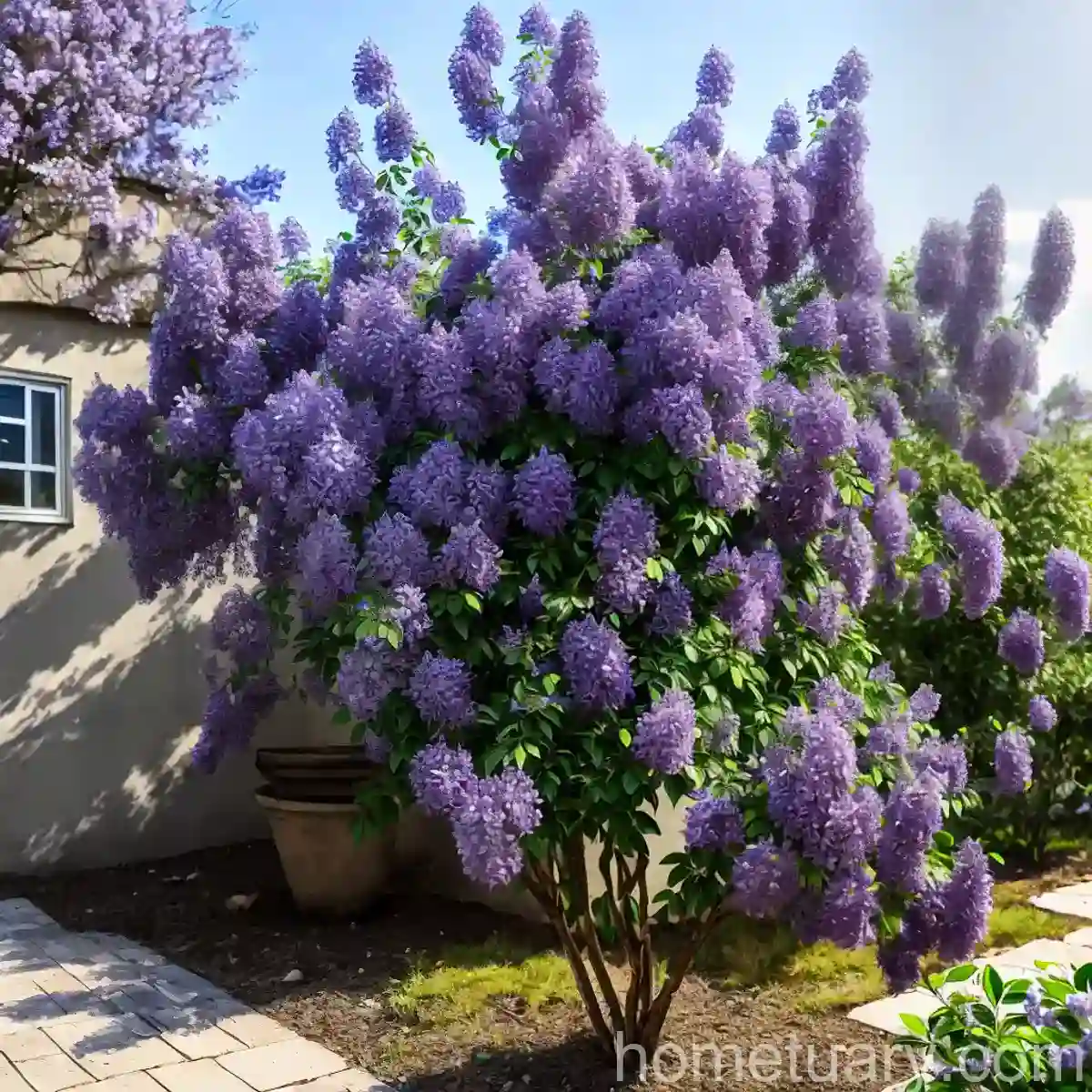American Boneset (Eupatorium perfoliatum): A Comprehensive Guide
Plants have always been an integral part of human civilization, offering a plethora of uses ranging from medication to ornamental purposes. American boneset, scientifically known as Eupatorium perfoliatum, is one such plant with a rich history and an array of applications. In this comprehensive guide, we will delve into the various aspects of American boneset – its cultural significance, uses, cultivation, and ecological impact. Whether you are an enthusiastic gardener, a nature lover, or a research scholar, this article aims to provide valuable insights into the world of American boneset.
What is American Boneset (Eupatorium perfoliatum)?
American boneset, also known as thoroughwort, feverwort, or agueweed, is a herbaceous flowering plant belonging to the Asteraceae family. This native North American species is characterized by clusters of small, white flowers that bloom in late summer and fall. The plant typically grows in moist, open areas such as woodlands, meadows, and along stream banks, and is often frequented by pollinators due to its nectar-rich blooms.
The name “boneset” is derived from the plant’s traditional use in treating dengue fever, which was once referred to as “breakbone fever.” The genus name, Eupatorium, is derived from Mithridates Eupator, a king of Pontus, who is said to have used a plant with similar properties. The species name, perfoliatum, refers to the unique characteristic of the stem appearing to pierce through the base of the opposite leaf, giving the impression of a single, perfoliate leaf.
American boneset has a long history of traditional medicinal use among various indigenous tribes. The plant was utilized for its purported diaphoretic, febrifuge, and anti-inflammatory properties. Despite its potential benefits, it is important to approach the use of American boneset, or any medicinal plant, with caution.
Now, let’s delve deeper into the various aspects of American boneset, covering its culture, uses, care, and more.
Key Takeaways – American Boneset (Eupatorium perfoliatum)
- Scientific Name: Eupatorium perfoliatum
- Common Names: American boneset, thoroughwort, feverwort, agueweed
- Family: Asteraceae
- Native Range: North America
- Flowering Season: Late summer to fall
- Habitat: Moist, open areas such as woodlands, meadows, and stream banks
- Traditional Uses: Febrifuge, diaphoretic, anti-inflammatory
- Caution: Consult a healthcare professional before using American boneset for medicinal purposes
It’s important to note that while American boneset has a rich history of traditional medicinal use, it should be approached with caution. Always seek advice from a healthcare professional before incorporating any plant into your medicinal routine.
Culture
Understanding the cultural significance of American boneset provides valuable insights into its historical uses and societal impact. From traditional medicinal practices to folklore and symbolism, the cultural context of this plant offers a multifaceted perspective. Let’s delve into the culture surrounding American boneset.
American Boneset in Traditional Medicine and Folklore
American boneset holds a significant place in traditional medicine due to its purported medicinal properties. Various indigenous tribes used the plant to address a range of ailments, including fevers, influenza, and rheumatism. The use of American boneset in traditional medicine underscores its historical relevance as a natural remedy.
Folklore surrounding American boneset also contributes to its cultural significance. The plant’s association with treating fevers and “breakbone fever” has led to a rich tapestry of folklore and stories passed down through generations. Understanding the folklore and traditional uses of American boneset sheds light on its deep-rooted cultural importance.
Symbolism and Historical Significance
Plants often carry symbolic significance in different cultures and historical contexts. American boneset, with its vibrant blooms and traditional uses, may hold symbolic value in various cultural settings. Exploring the symbolism and historical significance of American boneset provides a holistic understanding of its place in human history and culture.
Uses
The uses of American boneset encompass a wide range of applications, from traditional medicine to landscaping and ecological conservation. Understanding the diverse uses of this plant sheds light on its versatility and potential benefits. Let’s explore the various uses of American boneset in detail.
Medicinal Uses
American Boneset in Traditional Herbal Medicine
American boneset has a long history of use in traditional herbal medicine. It is reputed for its purported diaphoretic, febrifuge, and anti-inflammatory properties. The plant was historically employed to address fevers, flu-like symptoms, and inflammatory conditions.
When considering the medicinal uses of American boneset, it is crucial to emphasize the importance of consulting a qualified healthcare professional before using any plant for medicinal purposes. The correct preparation and dosage are essential considerations when utilizing plants for their potential medicinal benefits.
Contemporary and Herbal Remedies
In contemporary herbalism, American boneset continues to be explored for its potential health benefits. While traditional uses have laid the groundwork for its medicinal reputation, ongoing scientific research aims to shed light on the plant’s active compounds and therapeutic potential. As with any alternative remedy, it is important to approach the use of American boneset with caution and seek guidance from qualified practitioners.
Landscaping and Ornamental Use
The aesthetic appeal of American boneset’s white, tufted blooms and its ability to attract pollinators makes it a valuable addition to landscaping and ornamental gardens. The plant’s ornamental qualities and ecological benefits, such as supporting pollinators, contribute to its potential role in enhancing natural landscapes and gardens.
Ecological Importance and Conservation Efforts
From an ecological perspective, American boneset contributes to the biodiversity of its native habitats by providing nectar and pollen for pollinators. In light of ongoing concerns about habitat loss and declining pollinator populations, the role of native plants such as American boneset in supporting wildlife and ecosystems is increasingly recognized.
Conservation efforts aimed at preserving native plant species, including American boneset, play a crucial role in maintaining the ecological balance of natural habitats. Understanding the ecological importance of American boneset highlights its value beyond its ornamental and medicinal uses.
Cultivation
Successfully cultivating American boneset requires an understanding of the plant’s requirements, growth habits, and propagation methods. Whether you are interested in growing American boneset in a garden or exploring its horticultural potential, the following insights into its cultivation can serve as a valuable guide.
Water
American boneset thrives in moist soil conditions, making it well-suited to areas with consistent moisture, such as stream banks, wet meadows, and woodland edges. When cultivated in a garden or landscape setting, providing regular watering, especially during dry spells, can aid in maintaining optimal growth and flowering.
Sunlight
In its natural habitat, American boneset often occurs in partially shaded areas, although it can tolerate full sun to some extent. When cultivating American boneset, especially in garden settings, providing partial shade or dappled sunlight can help mimic its native habitat and support healthy growth.
Fertilizer
While American boneset can thrive in nutrient-rich soils, excessive fertilization may not be necessary, especially if grown in a naturalistic garden or landscape. Prioritizing soil health through organic amendments and compost can support the plant’s growth without relying on heavy fertilization.
Soil
The ideal soil for American boneset is rich in organic matter and well-draining, reflecting its native habitat preferences. Amending the soil with compost or organic matter can enhance its fertility and improve moisture retention, creating an optimal growing environment for the plant.
Pruning
As a herbaceous perennial, American boneset may benefit from periodic deadheading to encourage prolonged flowering and prevent self-seeding in garden settings. Additionally, removing spent blooms and maintaining a tidy appearance can contribute to the plant’s aesthetic appeal in ornamental gardens.
Propagation
American boneset can be propagated through seeds or division, offering opportunities to expand its presence in garden settings or naturalistic landscapes. Seed collection from mature plants and division of established clumps are viable methods for propagating American boneset.
Container Cultivation
While American boneset’s natural habitat is often in moist, open areas, it can also be cultivated in containers, provided that the growing medium offers adequate moisture and drainage. Container cultivation allows for the inclusion of American boneset in various garden settings, including patios, balconies, and naturalistic arrangements.
Common Diseases and Pests
American boneset, like many plant species, is susceptible to certain diseases and pests that can impact its health and vigor. Understanding the common issues that may affect the plant equips gardeners and enthusiasts with the knowledge to identify and address potential problems effectively.
Disease Diagnosis
While American boneset is generally resilient and resistant to many diseases, it may occasionally encounter issues such as powdery mildew or fungal infections, especially in humid conditions. Early diagnosis and prompt treatment, if necessary, are key to managing potential disease concerns.
Common Pests
Pests such as aphids, caterpillars, and beetles may occasionally affect American boneset, particularly during the growing season. Vigilant monitoring and integrated pest management techniques can help mitigate the impact of pests without resorting to heavy pesticide use.
Botanist’s Tips for Growing American Boneset
- Native Habitat Mimicry: Creating garden or landscape conditions that mimic American boneset’s native habitat can support its growth and overall resilience.
- Pollinator Support: Leveraging the plant’s ability to attract pollinators contributes to the ecological value of American boneset in garden settings.
- Soil Health: Prioritizing soil health through organic amendments fosters a favorable growing environment for American boneset.
Fun Facts about American Boneset
- The common name “boneset” is derived from the plant’s historical use in treating dengue fever, which was once referred to as “breakbone fever.”
- American boneset’s unique characteristic of appearing to pierce through the base of the opposite leaf, giving the impression of a single, perfoliate leaf, inspired its species name, perfoliatum.
Links to External Resources
- Missouri Botanical Garden – Eupatorium perfoliatum
- USDA Plants Database – Eupatorium perfoliatum
- North Carolina State University Extension – American Boneset
- Medicinal Plants of the Northeastern United States – American Boneset
In conclusion, American boneset (Eupatorium perfoliatum) embodies a rich tapestry of cultural significance, traditional uses, and ecological value. From its historical role in traditional medicine to its potential in supporting pollinators and natural landscapes, American boneset offers a host of benefits. By understanding its uses, cultivation, and cultural context, we can appreciate the depth of its significance and contribute to its preservation for generations to come.















